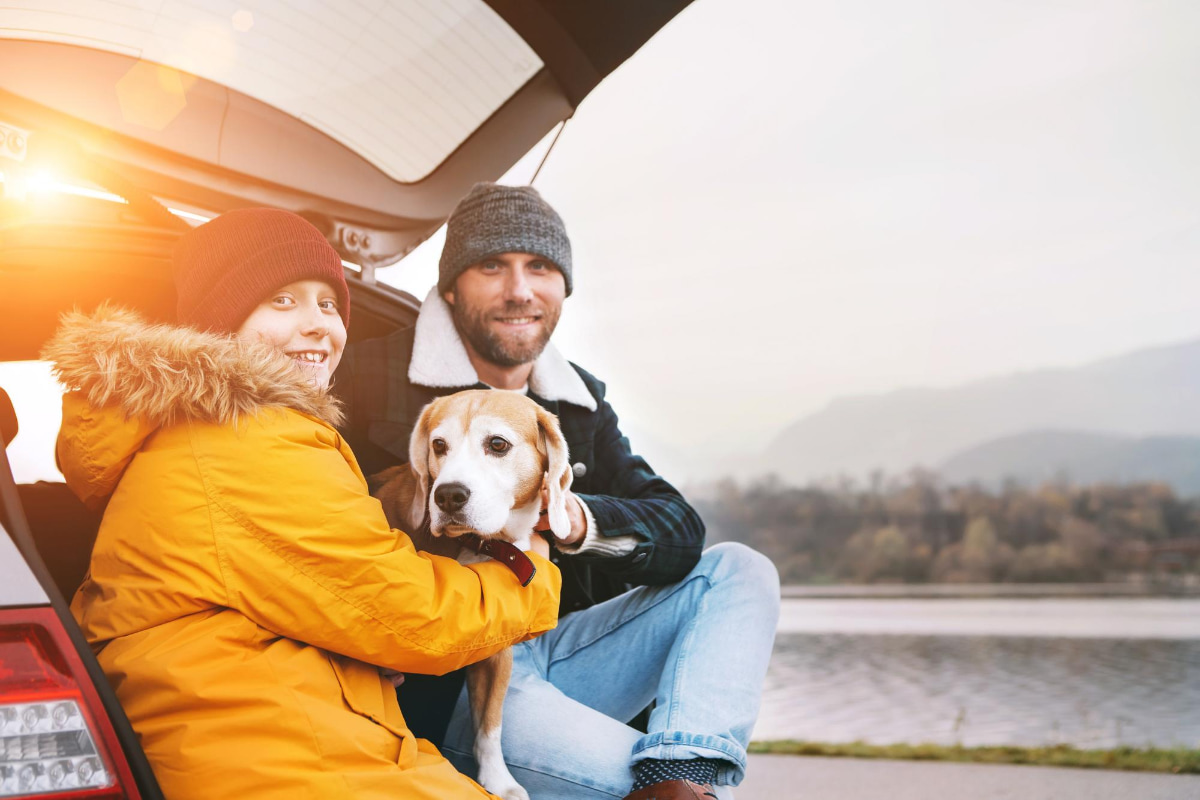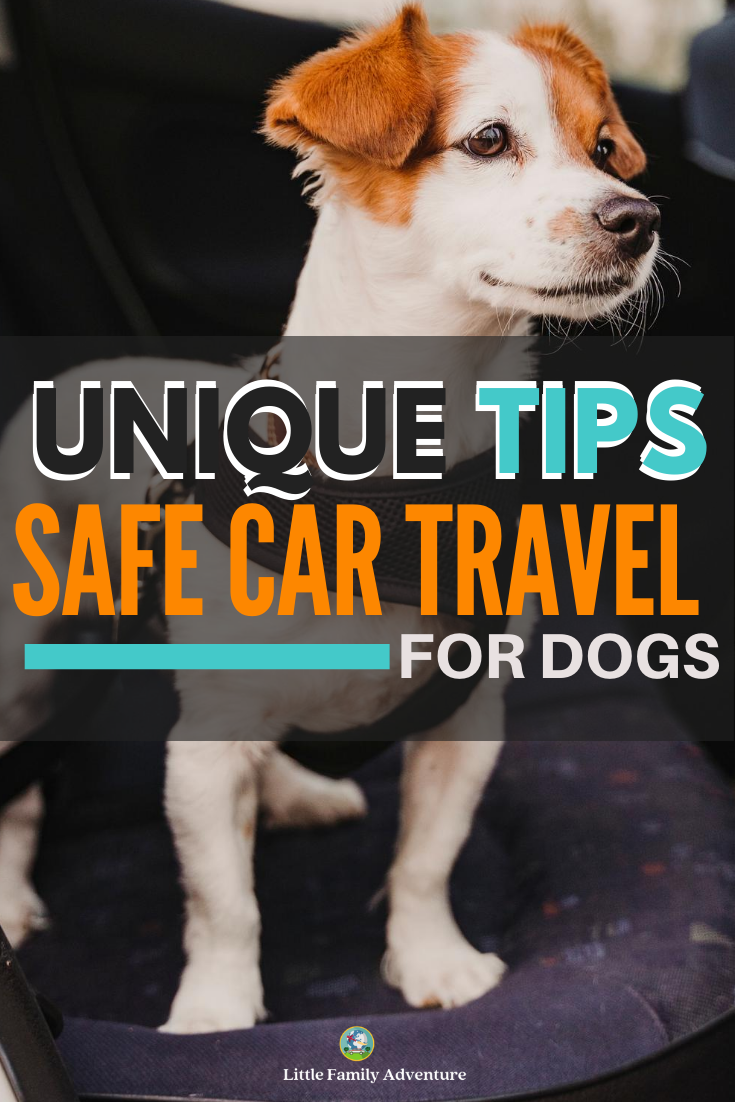Setting out on a family road trip with your furry friend in tow can amplify the adventure – and the challenge. Your pet isn’t just another passenger; they’re an integral part of the crew, requiring special consideration to ensure the journey is enjoyable for everyone.
So, let’s roll out a checklist tailored for safe and stress-free travel with pets.
This article contains affiliate links. We earn from qualifying purchases.
Pre-Trip Vehicle Preparation
Before hitting the open road, your car should be as ready as your pet for the long haul. A thorough vehicle checkup is a must – think of it as a pre-flight inspection but for the family car.
Ensure all fluids are topped off, tires are properly inflated, and brakes are in good working order.
Also, equip your vehicle with a pet safety harness or secured carrier to keep your companion safe and prevent distractions while driving – as distractions can cause accidents. The last thing you want when driving through Mississippi or Virginia, for instance, is to be involved in a road accident that leads to both injuries and car accident claims. So, it’s vital that you stay safe when traveling with your dog – or another kind of pet – when embarking on a family road trip.
Also, don’t forget climate control; maintaining a comfortable temperature is critical for pets’ well-being during transit.

Preparing a dog for a car trip should start already in his puppy years. Then, your dog will treat car rides like a normal part of his life. Calm and accustomed to the situation, most of the route will sleep peacefully. Keep in mind that a stressed dog barks, which distracts the driver. If you want to change this particular behavior of your dog, click here for humane bark collar options.
Packing Essentials for Your Pet
Imagine packing your suitcase and forgetting the essentials. That’s a no-go, right? The same holds true when considering what your pet needs on the road. So, make sure you pack:
- Food and water supply (plus dishes).
- Leash and collar with ID tags.
- A favorite toy or blanket for comfort.
- Waste bags for on-the-spot clean-up.
- Medications and a basic first aid kit.
With these items checked off, you’ll avoid pit stops that turn into quests for forgotten necessities. Moreover, familiar items can help alleviate stress for pets, making them feel at home even when they’re miles away from it.
Ensuring Safety on The Road
Once the journey begins, maintaining your pet’s safety is non-negotiable. Secure your pet in the back seat. Front seat airbags can be hazardous to them, even in a carrier. A well-ventilated space and regular stops every few hours will help your pet avoid restlessness and discomfort.
Importantly, never leave your pet alone in a parked vehicle, especially on warm days – temperatures can skyrocket quickly with dire consequences.
Can’t read now? Pin for later!

Dog Car Safety Equipment
Getting the right safety equipment before embarking on a car trip requires some advance preparation. If you decide to buy dog car safety equipment online, keep in mind that it takes several days for the ordered goods to reach your home, so plan accordingly.
You will certainly need a portable water bowl with a bottle and a food container so that your dog can drink/eat on a car stop. You have several options to choose from when it how you will be transporting your animal:

- Dog Carrier or Harness
Small dogs can be transported in a carrier or dog harness, which is secured with straps or the car seat belt. Miniature dog breeds or puppies are usually very mobile. It will be safe to keep them in a carrier or harness, as you will prevent them from moving and cool their emotions. Besides, thanks to this solution, your dog will not be able to put his/her head out the window or distract you while driving.

- Dog Cage/Crate
A dog crate’s walls, ceiling, and floor are made of metal grilles, most often aluminum. They are suitable for transporting large dogs, such as German Shepherds, but will also work well for carrying medium breeds, such as Beagle or Cocker Spaniel.
You can place the cage in the rear seat of the car or the trunk and secure it properly, e.g., with seat belts. In this way, it cannot move when cornering or braking, which could be dangerous not only for the dog but also for all the car passengers.
- Rear Seat Mat
It is a solution for large dogs that tolerate traveling by car well – you can go for it if your pet is calm and not restless while driving. The mat is mounted to the front seat headrests, and the dog can lie down freely on the entire rear seat. Also, you can put a similar one in the trunk.
On-the-Road Routines and Breaks
Consistency can be a source of comfort, especially for pets. So, aim to mimic your pet’s usual feeding and walking schedule as closely as possible during the trip. This predictability can help minimize their stress.
Schedule regular breaks – every two to three hours – which benefit all passengers, not just your pet. Use this time for:
- Bathroom breaks.
- Hydration and snacks – for both Rover and you humans
- A quick play session to burn off energy.
These pauses in travel are essential for keeping everyone, human and animal alike, in good spirits. They’re also a great opportunity to snap some memorable photos of your journey together.
Read next: 16 Essential Gifts for New Puppy Owners That Any Dog Would LOVE

Check Your Dog’s Health
Make sure you visit the vet before the journey. Take care of the required vaccinations and deworming. The vet will also assess whether your dog’s health allows for longer car journeys. If you are going abroad, do not forget to update the data in the dog’s passport and check all the requirements for importing animals to a given country.
Some dogs don’t like to travel by car and may show symptoms of motion sickness – they drool, are restless and have difficulty breathing. Moreover, they may also feel sick and have a gag reflex. Unfortunately, sudden braking or driving on uneven surfaces can worsen the symptoms.
Never give your dog any medication intended for people with motion sickness on your own. Any drug or dietary supplement that you want to give your pet should be consulted with a veterinarian. Please, remember that what works in humans can be toxic to animals.
Break for the Driver and the Dog
If you are going on a road trip that will last several hours, do not forget about rest stops. They are very important for the driver and passengers, but also for our furry friends. Breaks should be done about every 2 hours, although some dogs (e.g., puppies and dogs with joint problems) should be able to get out of the car more often.
Ensure that your dog can regularly satisfy its physiological needs, take a short walk, relax, discover new smells, and drink water. Never release your dog without a leash during breaks. It can end up tragically, because if the dog gets scared, it may escape into an unknown area where you will have issues to find it.
Navigating the Unexpected
Even with meticulous planning, the road can throw a curveball your way. Here’s how to handle unforeseen challenges:
- Keep contact information for emergency vets along your route.
- Pack an extra day’s supply of food and medication in case of delays.
- Stay calm if your pet becomes anxious or carsick; they’ll react to your emotional state.
Should you encounter a hiccup, remember that flexibility is key. And, who knows, maybe an unexpected detour might lead to a hidden gem of a dog park or an impromptu adventure.

Choosing Pet-Friendly Destinations
Selecting the right spots to take a break or stay overnight requires some upfront research. But it’s worth it. Seek out destinations that not only allow but welcome pets by:
- Using apps or websites dedicated to pet-friendly accommodations.
- Calling ahead to verify any size or breed restrictions.
- Looking for places with additional pet amenities.
- Researching parks and rest areas where your pet can stretch their legs.
These details matter. They ensure that upon arrival, tails are wagging and spirits remain high, with no nasty surprises to put a damper on the travel mood.
After the Trip: Post-Travel Pet Care
Before you switch into full relaxation mode when you get home after your road trip, checking your pet is prudent. Assess them for any ticks or pests they might have picked up along the way – prevention is easier than treatment.
Give them time to readjust to their home environment too, especially after an extended period away. And keep an eye out for any changes in behavior that may suggest discomfort or illness post-travel. If something seems off, don’t hesitate to contact your vet.
With these final thoughtful steps, you ensure that your pet recovers from the road trip just as ready for the next one as you are.
Conclusion
Traveling with your dog can only be stressful if you are not properly prepared for it. If you put a little effort into getting to know the advice on transporting pets, and the state requirements, nothing unpleasant should happen to you along the way. Use these traveling with pets tips and have a great and safe journey.
Both you and your dog can enjoy traveling together. Discovering new places is great for building a strong bond. For creating a relationship based on trust, make sure your dog won’t be afraid of traveling by car. You can ensure it by a smooth, steady ride, that is the best for your dog. Take frequent breaks and keep your dog safe, thanks to the appropriate transportation system. Have a nice journey!



This was helpful for me, as we also have a dog and love to travel! I just want to add that you should not forget about healthy snacks for the dog, you should not give it your food, so as not to harm his health.
Using a dog carrier to properly bring your dog to the vet is something I can see being really important. You want to make sure that they’re still comfortable while being disciplined in the car, as they might make a ruckus and ruin the inner furniture of the vehicle. I’ll pick up a good carrier so I can use it to take my dog to a local veterinarian whenever needed.